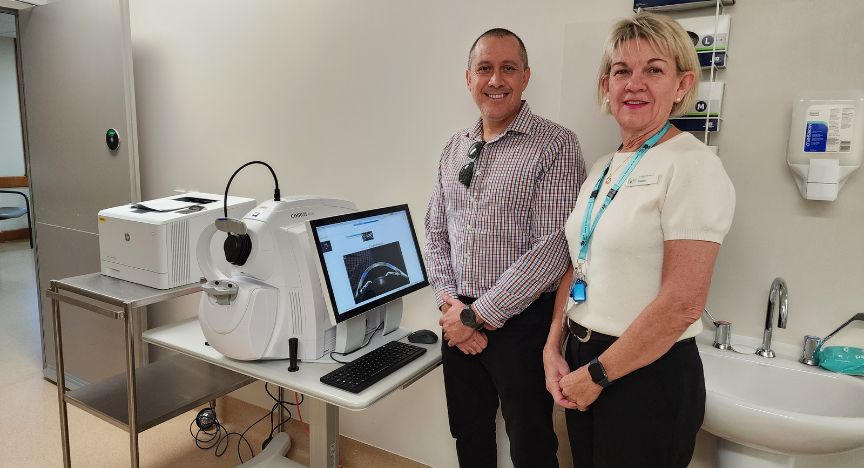
The following statement may be attributed to Central West Hospital and Health Service General Manager Acute Services Ms Karen McLellan:
The Central West Hospital and Health Service’s first ophthalmology clinic of 2023 was able to
go ahead as scheduled last month thanks to the timely purchase of vital new equipment.
The new equipment – an Optical Coherence Tomography (OCT) machine and a Field Analyser
machine – was needed to replace ageing equipment that was no longer suitable for use by the visiting specialist ophthalmology team.
The team, comprising two ophthalmologists, two optometrists, an anaesthetist and
administrative assistant, all from the Oxford Eye Centre in Brisbane, visits Longreach twice a
year – once early in the year and once later in the year.
Patients are brought from throughout the Central West to Longreach for the twice-yearly
ophthalmology clinics.
Without the new equipment in place, the first ophthalmology clinic of the year in late May would have had to be cancelled.
But thanks to the installation of the new equipment, the clinic was able to go ahead between 25-28 May and saw 147 patients.
On average, between 140 and 200 patients can be seen at each clinic.
Central West Health was funded to purchase the OCT and Field Analyser machines at a combined cost of $180,000 through Queensland Health’s Health Technology Equipment Replacement (HETR) program.
A further optical biometrics machine valued at $75,000 and funded by HETR also is on its way to supplement the new ophthalmology equipment.
The HETR program is intended to help fund asset replacement and improve asset investment and risk management decisions for hospital and health services.
We are proud in the Central West of the quality of the specialist ophthalmology service we can offer our communities despite how remote we are from major population centres.
We work hard to ensure all our services measure up to the expectations of our diverse and remote communities.
Thanks to programs like HTER, we can replace outdated equipment in a timely manner, without having to interrupt the delivery of our health services.
Technical information:
The Zeiss Cirrus 6000 OCT (Optical Coherence Tomography) machine is a sophisticated imaging system used in ophthalmology to capture high-resolution cross-sectional images of the retina and other structures within the eye. OCT is a non-invasive imaging technique that provides detailed information about the layers of the retina, allowing clinicians to diagnose and manage various eye conditions.
The Zeiss Humphrey Field Analyser (HFA3) is a widely used diagnostic instrument in
ophthalmology that measures and evaluates a person's visual field. It is particularly important in the diagnosis and management of conditions such as glaucoma, which can cause peripheral vision loss over time. The Field Analyser employs a technique called automated perimetry to
assess the sensitivity and extent of an individual's visual field. The test involves the patient looking at a central fixation target while small points of light are presented at different locations within their visual field. The patient indicates when they detect the points of light, allowing the instrument to create a map of their visual field sensitivity.